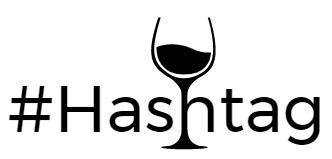Since I've been on a tear recently regarding zoning and housing and HALA and this and that, and I haven't fisked something in a good long time, I decided I would fisk the HALA report! I may be wrong about what a lot of this means, but I may be right! Above all, any opportunity for our community to review the 65 recommendations that we are (apparently) either For or Against is good, right?
I'm going to do this section by section. Morsels are easier than the whole thing and all. But basically, when you see people stating, unequivocally, that they oppose HALA, here is what they are opposing.
If you want to follow along, I'm starting on page 15:
R.1 - Partnership for Mandatory Inclusionary Zoning
This is now known as Mandatory Housing Affordability. Basically, this recommendation institutes a requirement that developers create a specific percentage of housing that is affordable to folks at 60% or below Area Median Income (AMI) on-site, or pay a fee-in-lieu, with those dollars being able to be leveraged against other sources to build near-site (in or near the same neighborhood). Put another way: Developer-specific funding for affordable housing.
R.2 - Enact a Real Estate Excise Tax (REET) for Affordable Houing
Currently, the REET is 1.78% of the sale price for all property sales. It gets divvied up for capital projects for everything from roads to parks to fire stations. R.2 seeks legislation from the State allowing for an increase in REET capacity of 0.25% that would all go toward affordable housing. Put another way: right now, if a developer sells a property for for $2,500,000, $44,500 is due in REET. This change would mean they would pay $50,750 in REET, and $6,250 of that would be directed specifically to building and preserving affordable housing.
R.3 Renew and Increase the Seattle Housing Levy
Done and done - with 70.6% of Seattle voters saying #YesForHomes! I was marginally involved.
R.4 Renew and Expand the Multifamily Tax Exemption Program (MFTE)
This one has some more controversy. Basically, MFTE buildings set-aside a certain number of units that are affordable for folks at 85% of AMI for 12 years (or when they drop out of the program). The proposal would allow for buildings to go for up to 24 years, increase the set-aside percentage, include microhousing buildings, and make it easier to require more family size (3 BR +) units be set-aside. Some folks oppose the MFTE to begin with, and others (myself included) would like to see it a minimum 12 years, locked in on the property. Overall, the program has about 2,000 units supported in Seattle for folks at 85% of AMI.
R.5 Establish a Local Voluntary Employers Fund; Explore Partnerships with Employers and Major Institutions.
Basically the city working with big employers on providing housing affordable to folks who will be working for those big employers. With the big employers footing the bill.
R.6 Expand the State Housing Trust Fund
This is basically something that we support every year. And with expansion, there is created more opportunity for affordable housing to be built in areas that don't have the commercial tax base for a Housing Levy (ie: Renton), but still have the need for affordable housing to be constructed and preserved.
R.7 Reinstate the City Growth Fund
Basically setting aside a set amount of already incoming taxes to preserve affordable housing at risk of being lost due to growth. We had it from 1985-2002. This would bring it back.
R.8 Establish a Supportive Housing Medicaid Benefit
This would have the State, through a provision in the ACA, allow for Medicaid payments for supportive services for very low-income folks, services that are shown to help prevent homelessness and provide necessary support to stay housed.
R.9 Hotel Tax on Short-Term Rentals
Expanding the Hotel Tax to cover Air BnB. I think this has already been done.
R.10 Explore a Social Impact Investing Model for Housing in Seattle
Making it easier for folks and large investors to help support low-income housing preservation, while still making a slight profit. Bellwether is doing it pretty solid.
So that makes up the "R" section. Next up I'll go through the "L" section (page 19).
